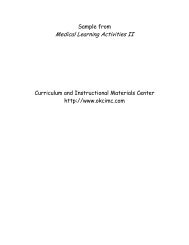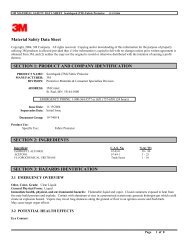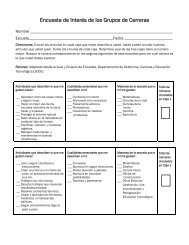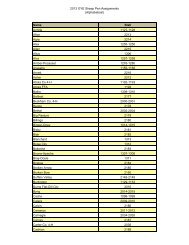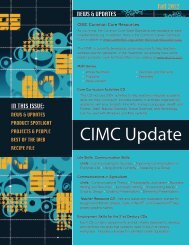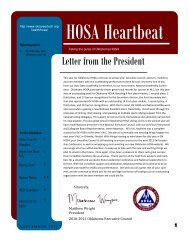Highlights of the 2010 Guidelines for CPR and ECC - ECC Guidelines
Highlights of the 2010 Guidelines for CPR and ECC - ECC Guidelines
Highlights of the 2010 Guidelines for CPR and ECC - ECC Guidelines
Create successful ePaper yourself
Turn your PDF publications into a flip-book with our unique Google optimized e-Paper software.
lp ae y d ira et sr i c u eA r L Sa d u lt c p r<br />
Why: Newer case reports suggest that an AED may be safe<br />
<strong>and</strong> effective in infants. Because survival requires defibrillation<br />
when a shockable rhythm is present during cardiac arrest,<br />
delivery <strong>of</strong> a high-dose shock is preferable to no shock. Limited<br />
evidence supports <strong>the</strong> safety <strong>of</strong> AED use in infants.<br />
• Providers are advised to seek expert consultation, if<br />
possible, when administering amiodarone or procainamide<br />
to hemodynamically stable patients with arrhythmias.<br />
• The definition <strong>of</strong> wide-complex tachycardia has been<br />
changed from >0.08 second to >0.09 second.<br />
PEDIATRIC ADVANCED<br />
LIFE SUPPORT<br />
Summary <strong>of</strong> Key Issues <strong>and</strong> Major Changes<br />
• Many key issues in <strong>the</strong> review <strong>of</strong> <strong>the</strong> PALS literature resulted<br />
in refinement <strong>of</strong> existing recommendations ra<strong>the</strong>r than<br />
new recommendations; new in<strong>for</strong>mation is provided <strong>for</strong><br />
resuscitation <strong>of</strong> infants <strong>and</strong> children with selected congenital<br />
heart defects <strong>and</strong> pulmonary hypertension.<br />
• Monitoring capnography/capnometry is again recommended<br />
to confirm proper endotracheal tube position <strong>and</strong> may<br />
be useful during <strong>CPR</strong> to assess <strong>and</strong> optimize <strong>the</strong> quality <strong>of</strong><br />
chest compressions.<br />
• The PALS cardiac arrest algorithm was simplified to<br />
emphasize organization <strong>of</strong> care around 2-minute periods <strong>of</strong><br />
uninterrupted <strong>CPR</strong>.<br />
• The initial defibrillation energy dose <strong>of</strong> 2 to 4 J/kg <strong>of</strong> ei<strong>the</strong>r<br />
monophasic or biphasic wave<strong>for</strong>m is reasonable; <strong>for</strong> ease <strong>of</strong><br />
teaching, a dose <strong>of</strong> 2 J/kg may be used (this dose is <strong>the</strong> same<br />
as in <strong>the</strong> 2005 recommendation). For second <strong>and</strong> subsequent<br />
doses, give at least 4 J/kg. Doses higher than 4 J/kg (not<br />
to exceed 10 J/kg or <strong>the</strong> adult dose) may also be safe <strong>and</strong><br />
effective, especially if delivered with a biphasic defibrillator.<br />
• On <strong>the</strong> basis <strong>of</strong> increasing evidence <strong>of</strong> potential harm<br />
from high oxygen exposure, a new recommendation has<br />
been added to titrate inspired oxygen (when appropriate<br />
equipment is available), once spontaneous circulation<br />
has been restored, to maintain an arterial oxyhemoglobin<br />
saturation ≥94% but



